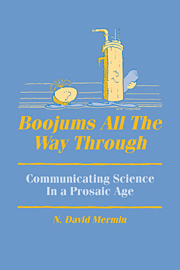26 - Special functions: a group theoretic approach
Published online by Cambridge University Press: 02 December 2009
Summary
This delightful volume does for most of one's favorite special functions what arithmetic does for the exponential: it displays them not as solutions to differential equations but as matrix elements of representations of elementary Lie groups.
If you feel deeply that there is nothing more to say after pointing out that ex is the solution of f′ = f(withf(0) = 1) and do not care that it is also 2.71828 … multiplied by itself x times, then you also might feel inclined to ignore this book. This would be a pity, because almost half is devoted to the kind of general exposition of Lie groups, Lie algebras and their representations that few mathematicians are capable of treating us to. It is an exposition that prefers words to symbols, is intuitive and does not require us to scale a mountain when we only want to peek over the garden hedge. Knowing only a little linear algebra, one can read this much with joy and enlightenment without compromising one's devotion to differential equations.
If, however, you have always suspected that there was more to Bessel functions, Gegenbauer polynomials, associated Laguerre polynomials, and Hermite polynomials than Morse and Fesh bach or Watson were letting on, then you can indulge in the feast as well as the cocktails. And there, in the algebraic paté, you will come upon those higher transcendental truffles you long ago snuffled in the garden of analysis. Only a hard man could fail to be moved by this transformation, and you can see what it has done to a soft-hearted esthete like your reviewer.
- Type
- Chapter
- Information
- Boojums All the Way throughCommunicating Science in a Prosaic Age, pp. 309Publisher: Cambridge University PressPrint publication year: 1990



